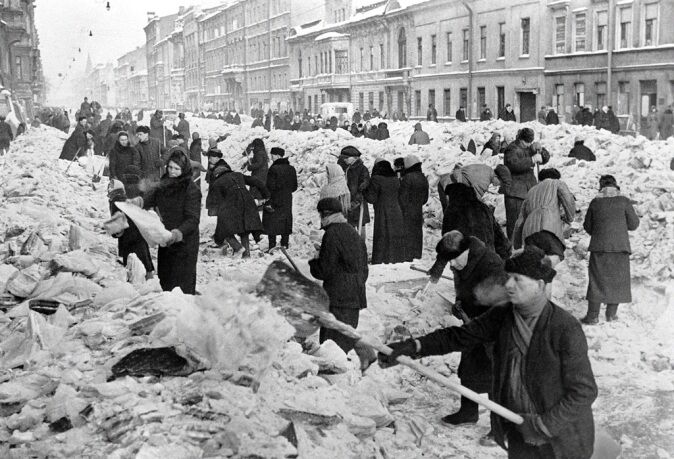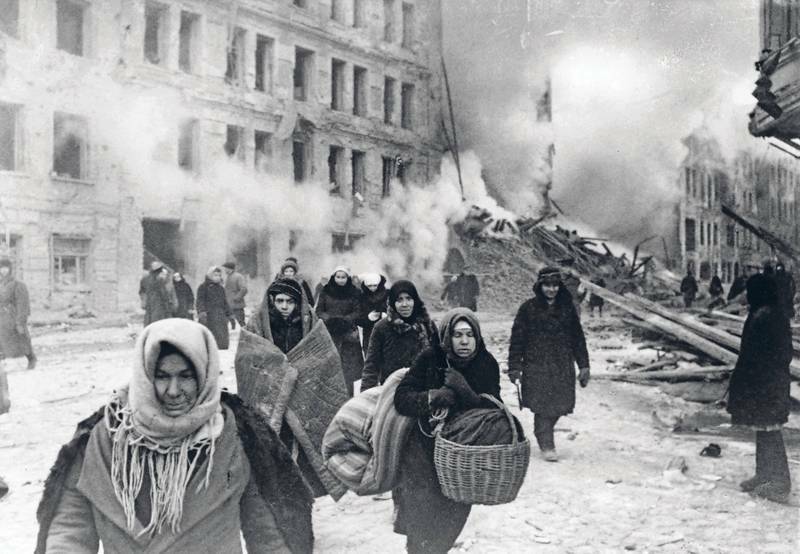One of the severe chapters of St Petersburg history is the Second World War with Germany and the Siege of Leningrad.
At midday on 22 June 1941 workers in Moscow were summoned to factory meetings to hear the devastating announcement that in the early hours of that morning Nazi Germany had launched a massive unprovoked offensive against the Soviet Union.
Weakened by hunger, numbed by fierce frosts and deprived of electricity and water, people struggled to defend their native land and with energy and resoluteness fought for survival in the vast city.
Despite all tragic losses, civilians refused to surrender, an act that earned it the distinction of being named Russia’s first “Hero City.” Today, the Siege of Leningrad has become an important part of the city’s heritage, and the mark it has left can be found on many of St. Petersburg’s museums, monuments and citizens.
The Historical Facts of Leningrad during WWII
In fact Stalin had had good warning of Hilter’s intentions but preferred to believe his own propaganda. As a result partially demobilized Soviet Army was taken completely by surprise. Reality broke in with such force that as a precaution Stalin ordered the evacuation not only of the government but of whole industries to the relative safety of former Kubishev (nowadays Samara), beyond the Ural mountains.
During the Second World War Leningrad (nowadays St Petersburg) lived through the most tragic time- the 900-day siege lasting from September 1941 to January 1944. In 1941 German troops were stopped short outside Leningrad. A division of militias, citizen soldiers who were badly armed and hastily trained played a vital role in defending the city resolving to protect it at the cost of their own lives.
Although the enemy did not enter the city, Leningrad was cut off from the rest of the country and the most horrific siege in the history of mankind began. Such food as had been stockpiled in the city’s Badaevskiy warehouses was captured by the Germans and destroyed in full view of the residents.
The winter of 1941-1942 was the most terrible. Starvation claimed the lives of more than 53,000 people in December alone as the bread ration was reduced from 400 gr a day to just 125 gr. Residents of Leningrad had to endure constant enemy bombing which destroyed the water supply, while the power stations ran out of fuel so that homes were left without heating or lighting in a season when temperatures hovered around -25 degrees.
Every available soldier and every piece of equipment was mobilized in the defense of St Petersburg (the city bore the name Leningrad during Soviet Times). Residents were ordered to dig anti-tank defenses. Barrage balloons were floated above strategic points, barricades erected near major highways.
The city was under constant enemy bombardment, with only one route to connect it with the mainland, the so-called the “Road of Life”. This was the name given to the route, 100 km long which linked the city with the Osinovets Cape on Lake Ladoga and when the lake was frozen.
The uninterrupted activity of this legendary route was maintained at the cost of the lives of numerous drivers, sappers, railway-men, soldiers, pilots, anti-aircraft gunners and artillery men.
Some 700,000 people died from cold and starvation during this horrific time.
The composer Dmitri Shostakovich served in the Leningrad civil defense force as a fireman during the Siege whilst working on his Seventh Symphony. In August 1942 front-line units were ordered to release every available instrumentalist for a broadcast performance of this, the Leningrad symphony at the city’s Philharmonic Hall.
His work was broadcast live over the radio and many of the besieged citizens later testified to the role it played in holding body and soul together.
In January 1943 the blockade was broken on a narrow strip of the front and only in 1944 the siege of Leningrad was completely ran.
What you will See on WWII and Siege of Leningrad Tour
- The Memorial to the Heroic Defenders of Leningrad with exhibition dedicated to the Siege of Leningrad. You will see a short documental film that was shot by several cameramen in the besieged city. There are no words in the film, just sounds that could be heard in the city.
- Pulkovo Heights, located 12 miles outside of St. Petersburg, it was the spot of an important battle in 1941. The German army held the heights, rising about 200 feet above the city, from 1941 to 1944 using this strategic point to bomb Leningrad during the siege. Several anti-tank pillboxes and defensive outposts have been preserved since that time.
- Piskaryovskoye Memorial Cemetery which is the final resting place of half a million residents of Leningrad, buried in 186 mass graves. There is the eternal flame with a marble plate and a long alley leading visitors to a monument with a statue of the Motherland, a symbol of the courage and fortitude of the citizens of Leningrad. It is a sacred place in St. Petersburg that will never allow us to forget the tragedy Leningrad survived in 1941-1944.











